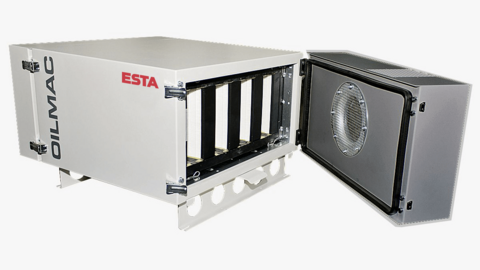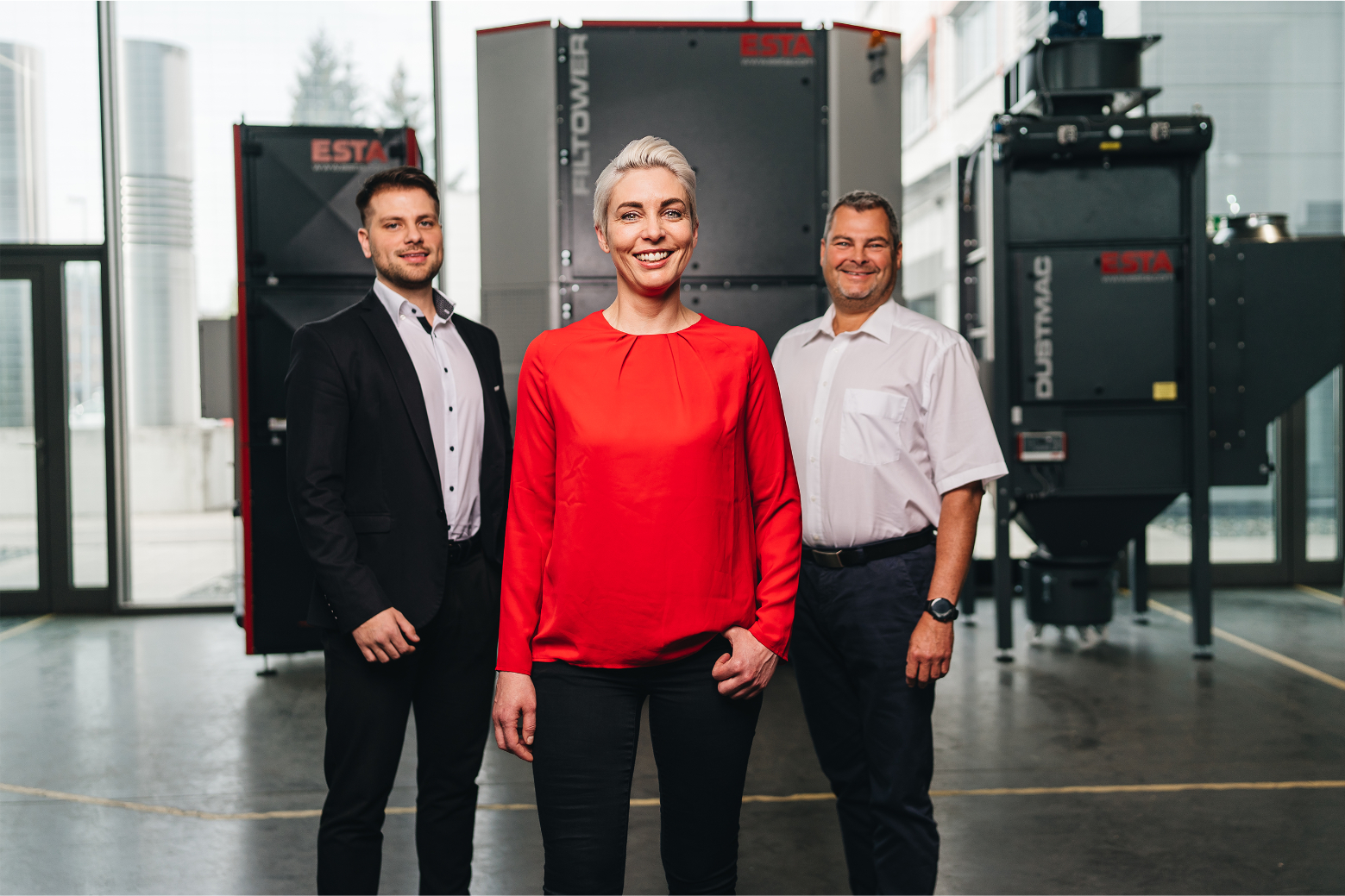OIL AND EMULSION MIST EXTRACTION - HOW DANGEROUS ARE COOLING LUBRICANTS?
Cooling lubricants are used in many machine tools that are employed for cutting or forming processes. Since the resulting vapours and mists must not exceed a value specified by law (occupational health and safety), we answer all your questions about oil and emulsion mist extraction here.

USEFUL INFORMATION ABOUT COOLING LUBRICANTS
WHAT ARE COOLING LUBRICANT MISTS AND WHAT ARE THEY FOR?
When milling, turning, drilling, etc., oils or emulsions are used for cooling and lubrication to keep the temperatures that arise during machining as far as possible from the tool and workpiece. This has several advantages: lower frictional forces improve the surface finish of the material and extend the service life of the processing tool. In addition, the emulsion binds the dusts occurring and removes them from the workpiece together with the shavings.
WHAT HAZARDS ARISE FROM COOLING LUBRICANTS?
However, the use of cooling lubricants also brings a great disadvantage with it. Due to the high tool speeds and the high temperatures, the cooling lubricant mix is distributed in the air in fine particles. These particles are to a certain extent harmful to health, can cause occupational diseases and must be extracted accordingly.
EMISSIONS FROM COOLING LUBRICANTS
In work areas it is possible to achieve the following concentrations of cooling lubricants in the air according to the current technical state of the art in the sectors and areas concerned:
| Water-mixed cooling lubricants in metalworking, water-miscible and water-mixed forming aids | Total of steam and aerosols 10 mg / m³ (I-fraction *) |
| Non-water-miscible cooling lubricants with a flash point > 100° C during metalworking | Total of steam and aerosols 10 mg / m³ (I-fraction *) |
| Non-water-miscible forming aids | Total of steam and aerosols 40 mg / m³ (I-fraction *) |
| Non-water-miscible cooling lubricants with a flash point < 100° C during metalworking | Total of steam and aerosols 100 mg / m³ (I-fraction *) |
* Among other things, the mass fraction of suspended particles or airborne particles inhaled through the mouth and nose is the inhalable fraction (I-fraction). The inhalable fraction depends partly on the speed and direction of air movement and on the rate of inspiration, and is a measure for assessing possible health hazards at the workplace.
If these concentrations are not reached, it can be assumed that no measures according to the graduated concept (DGUV 109-003, section 6.3.3) are necessary. In addition, the workplace limits, which can be found in the safety data sheets of the respective cooling lubricant, must be complied with.
Further information:
- DGUV Rule 109-003 (formerly BGR/GUV-R 143)
- Hazardous Substances Ordinance Section 4
COOLING LUBRICANTS AT THE WORKPLACE
TASKS FOR ACTIVITIES WITH COOLING LUBRICANTS
In the case of activities involving cooling lubricants, the company must ensure that the following hazards are eliminated or minimised, in so far as this is technically possible: the risks arising from skin and eye contact, absorption into the body, emission into the air breathed, as well as the risks of fire and explosion.
If the fundamental basic measures (Chapter 6 of DGUV Rule 109-003) are not sufficient, ventilation measures such as extraction systems and filtering separators or room ventilation systems must be deployed.
WHAT EXTRACTION FOR WHICH AEROSOL?
The suitability of the separators (aerosol separators, oil mist separators, emulsion mist separators) for emissions of cooling lubricants is shown in the table below.

The separation systems are not protected against fire and explosions.
In addition, the separated substances may only be returned to the cooling lubricant circuit if no additional risk occurs by returning them, for example by changing the composition, or microbial colonisation of the deposited substances.
In the case of CMT substances (carcinogenic, mutagenic, teratogenic substances) the air must not be returned to the working area. See TRGS 560 chapter 3.1.
Further information:
- DGUV Rule 109-003 (formerly BGR/GUV-R 143)
ESTA OIL AND EMULSION MIST SEPARATOR OILMAC
Oil mist separator for extracting aerosols and mist particles.
As a rule, the OILMAC units are installed directly on the enclosure of the processing machine and connected via a hose. The three-stage filter system ensures efficient filtration of the cooling lubricant mist or fumes produced during the machining process. Thereafter, the filtered-out cooling lubricant can be transported back to the machine. Thanks to a HEPA H13 filter, the air can be returned to the working area, taking into account the corresponding limit values.

- TRGS 910
- TRGS 611
- TRGS 560
CONTACT
WE ARE HAPPY TO PROVIDE A PERSONAL CONSULTATION
We can adapt our exhaust installations to your needs. Tailor-made, modular and individual. Ask us!

